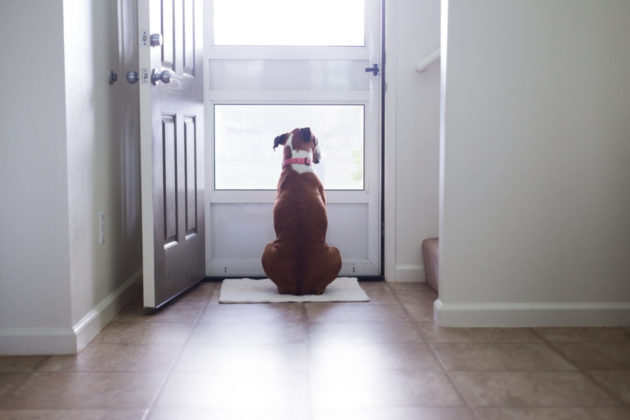Does your dog freak out every time you leave the house? Here’s how to deal with his separation anxiety.
Separation anxiety in dogs is a very complex issue. This is a behavior issue that would truly benefit from working one-on-one with someone local to you. You can find professionals at www.apdt.com or www.iaabc.org. Keep in mind, there are many degrees of anxiety and it may be that simple things, such as mental enrichment, food-filled toys or increased exercise can help.
You need to work with a qualified professional experienced in working with separation anxiety to determine the degree to which your dog is experiencing anxiety. Other excellent resource are the books: I’ll be Home Soon by Patricia McConnell and Don’t Leave Me: Step by Step Help for Your Dog’s Separation Anxiety by Nicole Wilde.
For “general anxiety”, exercise can really help. In fact, exercise can help most dogs with a variety of unwanted behaviors, since many don’t get anywhere near enough exercise. Just like with people, going out and doing something physical can make you feel better because it releases neurotransmitters and endorphins in the brain. It also gives the dog something to focus on other than the anxiety, such as occupying their minds with a nice long walk with lots of interesting things to see and smell.
Of course, exercise also helps make a dog tired. This way, when they’re back at home, they’re more likely to take a long nap — and it’s hard to be anxious when you’re sleeping! Exercise doesn’t have to be just limited to the outdoors. Play with your pooch inside with a good game of fetch or hide and seek, or try some nose work with empty boxes and a few low-cal treats.
Exercise also doesn’t have to be limited to physical things – mental exercise can also help an anxious dog for the same reasons – it gives the dog something else to focus on. Giving him food stuffed toys like Kongs or other puzzle toys can be a great way to help relieve a dog who experiencing separation anxiety.

